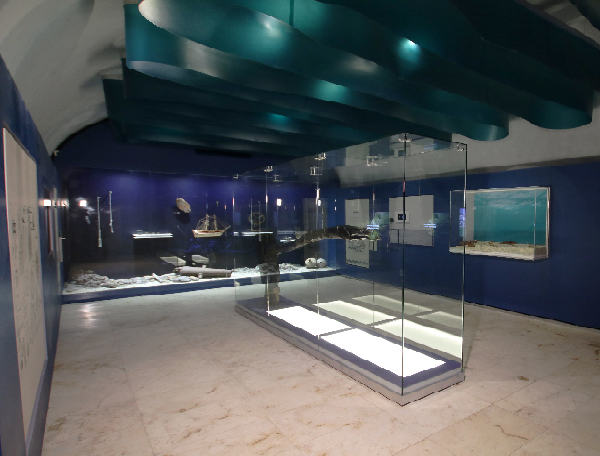Hand in hand with the recent opening of the Museum of Underwater Archaeology, Reducto de San José el Alto, held on December 2017, in the city of Campeche, the National Institute of Anthropology and History (INAH) publishes a catalog with the same name for this important space of diffusion and preservation of the submerged cultural heritage of Mexico.
The catalog has an introduction by Diego Prieto Hernández, general director of the institute, and is composed of two chapters authored by Helena Barba Meinecke, specialist of the Subdirectorate of Underwater Archeology (SAS) of INAH, and Pilar Luna Erreguerena, pioneer of the discipline in the country. The museum is located inside Reducto de San José el Alto, Av. Francisco Morazán, Colonia Bellavista, in Campeche.
It offers a first-hand approach to both the history and significance of this discipline, as well as the underwater wealth of Mexico and the many efforts that have been made to preserve it, reason why this museum was installed in Campeche’s Reducto de San José el Alto.
Recognized as the first space of its kind in the Americas, the Museum of Underwater Archeology houses 426 pieces -between prehistoric, pre-Hispanic, colonial and nineteenth and twentieth centuries- that were submerged in the waters of cenotes and flooded caves, lakes and lagoons, underground and superficial rivers, springs and most of them under the sea for hundreds or even thousands of years”, says anthropologist Diego Prieto in his introductory text to the work.
The catalog also pays special attention to explaining all the phases involved in underwater archeology: from the documentary research and the collection of ethnographic data prior to the exploration seasons, to the detailed in situ research, the diverse and multidisciplinary processes that are required to extract a submerged cultural element and provide it with an effective conservation, diffusion and, mainly, protection against the threat of looting by the hands of treasure hunters.
Helena Barba highlights that as of December 5, 2017 the declaration of the Museum of Underwater Archeology, Reducto de San José el Alto started, as part of the 2001 UNESCO Convention on the Protection of the Submerged Cultural Heritage. This distinction was conferred during the Seventh Meeting of State Parties of the aforementioned convention, held in May last year, in Paris, France.

Banco Chinchorro, Quintana Roo (Photo: TripAdvisor)
The archaeologist points out that this international legal instrument, adopted in 2001 by the countries member of UNESCO and which activities include the recognition of the best global practices in its field, is an important tool when it comes to protecting cultural traces of pillage, climate change, war conflicts or the damage caused by aggressive fishing and other threats.
“Mexico played an important role in the drafting of the text of the convention, as well as in its ratification. Our country was elected as part of the Scientific and Technical Advisory Council”, stated Pilar Luna in the catalog.
It should be noted that this new INAH catalog offers important historical data that introduces the reader to topics such as the role that cenotes, rivers and seas had for the ancient Maya, by being centers of ritual activities, points of commerce, or places of fishing and food sustenance.
Likewise, the publication addresses the naval activity that took place during the viceroyalty period, and the way in which navigators from the 16th to the 19th centuries, had to face – with tragic results for their ships, crew and merchandise – hurricanes, storms, the shallows and the reefs of the “apparently calm” waters of the Gulf of Mexico and the Mexican Caribbean.
In that sensey, the catalog presents some of the most important research projects carried out by the SAS, for example: the Inventory and Diagnosis of the Archaeological and Historical Heritage Submerged in the Banco Chinchorro Biosphere Reserve, off the coast of Quintana Roo; the Galleon of Manila, in Baja California; or prehispanic objects found at the El Nevado de Toluca crater, in the State of Mexico.
Source: yucatanalamano.com



